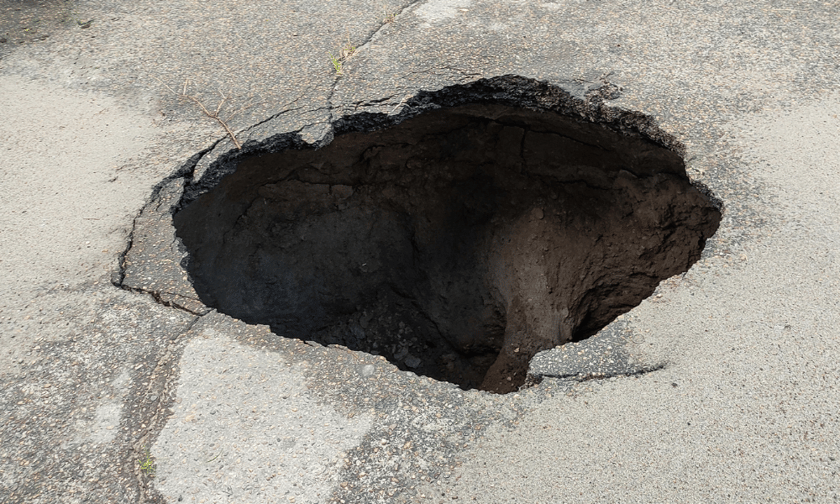

A sinkhole in Godstone, Surrey first appeared on February 17, causing many residents to evacuate their homes.
While the residents returned shortly after March 26, the cause of the collapse is still unknown.
The BBC reported that “quite a lot of anomalies had been found underground.”
Sinkhole occurrences in the UK are on the rise, partly due to “extreme rainfall, which scientists link to climate change,” according to ITV News.
Andrew Farrant, a British Geological Survey geologist told The Guardian that he suspects sinkhole formation will only be exacerbated as time goes on: “Many of our older Victorian culverts and drains simply weren’t designed to cope with some of the demands placed on them due to changes in climate and increases in population and urban development,”
Certain areas are more prone to sinkhole formation.
An industry expert told Insurance Business: “Certain types of ground are more susceptible to the formation of sinkholes than others. If you're on chalk in this country or abroad, that’s a calcareous rock which can dissolve away, leaving a hole. If you backfill a quarry poorly, or have a leaky drain, that can wash away fines, leaving a hole.”
John Richmond, technical director for WSP, explained that the risk posed by ground instability is often linked to either “a natural geological hazard or past human activities, such as mining.”
Richmond stressed the importance of understanding the area: “The key to understanding the risk to properties is by having a clear understanding of the site geology, hydrogeology, hydrology, and the site history.”
According to the other expert: “The best way of deciding whether you're in an area prone to sinkholes is to conduct something called a desk study, this where someone looks at all the old plans and looks at the geology and produces a geotechnical risk hazard.”
Brokers can access sinkhole information online, explained the expert: “You can access a database to see whether you're in an area that's prone to them.”
Richmond also suggested that in areas of greater risk, brokers could undertake further investigation: “In areas of greater risk the ‘coal mining report’, ‘mine entry plans’ and/or ‘chalk cavity records’ can be obtained to assess the risk further and establish whether intrusive site investigations and remedial measures are warranted.”
Some sinkhole problems can be relatively simple to fix, especially when caused by identifiable sources.
The industry expert noted: “Sometimes sinkholes occur because you've had a leaky drain above the top. When that happens, you fix the drain or pipe, and then repair it. However, if it’s a natural geological sinkhole, it’s more of an issue because it’s probably been going on for a lot longer…”
Gallagher’s representative explained that in certain circumstances, organisations may be responsible for causing the sinkhole: “Sinkholes are caused by a variety of reasons, and in some cases, there will be recourse to any organisation that has played a role in causing the sinkhole - an example could be utility companies’ infrastructure failing, which causes excessive moisture in the ground and in turn leads to subsidence and sinkholes.”
While a property insurance policy would generally cover the costs to repair the damage, it may not provide cover for rectifying the problem – that is dependent on the circumstances.
In the aftermath of a sinkhole incident, Richmond recommended that brokers advise their clients to appoint both a structural engineer and a geotechnical engineer: “It would be recommended that a structural engineer and geotechnical engineer is appointed in the first instance. The structural engineer to assess the condition of any damage to the existing structures and the geotechnical engineer to advise on the remedial measures required to the sinkhole and whether any further investigations are required to investigate any ongoing risks to the property,”
Brokers should be aware that certain geological conditions can affect a client’s coverage.
According to a Gallagher representative, “damage caused by sinkholes to property would usually be covered under a standard property insurance policy - unless there is an inclusion by the underwriters due to specific geological issues, such as subsidence in the area…”
Brokers should also make their clients aware of potential increased costs. As an expert pointed out: “When natural geological sinkholes occur, it's probably more extensive in that area, so they’re more expensive to fix.”
